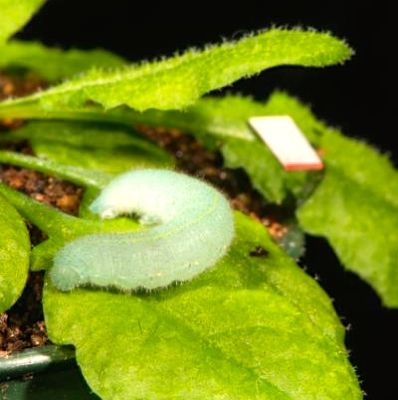University of Missouri-Columbia – Researchers at the University of Missouri-Columbia have found plants can not only tell the difference between the sound waves caused by insects chewing and wind but they respond with more defences.
‘We found that feeding vibrations signal changes in the plant cells’ metabolism, creating more defensive chemicals that can repel attacks from caterpillars,” said lead researcher Heidi Appel, senior research scientist in the Division of Plant Sciences in the College of Agriculture, Food and Natural Resources and the Bond Life Sciences Center at MU.
Read Also

Manitoba Ag Days 2026: Local businesses gear up for Brandon farm show
Most of agriculture is seemingly at Manitoba Ag Days each January: Manitoba agribusinesses and farm groups look forward to connecting with farmers at the 2026 show.
“Previous research has investigated how plants respond to acoustic energy, including music,” she said. “However, our work is the first example of how plants respond to an ecologically relevant vibration.”
In the study, caterpillars were placed on Arabidopsis, a small flowering plant related to cabbage and mustard. Using a laser and a tiny piece of reflective material on the leaf of the plant, researchers were able to measure the movement of the leaf in response to the chewing caterpillar.
- More ‘Did you know?: Insect farms: Investors see big profits in thinking small
They then played back recordings of caterpillar feeding vibrations to one set of plants, but played back only silence to the other set of plants. When caterpillars later fed on both sets of plants, the researchers found that the plants previously exposed to feeding vibrations produced more mustard oils, a chemical that is unappealing to many caterpillars.
“What is remarkable is that the plants exposed to different vibrations, including those made by a gentle wind or different insect sounds that share some acoustic features with caterpillar feeding vibrations did not increase their chemical defences,” said Rex Cocroft, professor of biological sciences. “This indicates that the plants are able to distinguish feeding vibrations from other common sources of environmental vibration.”
“Caterpillars react to this chemical defence by crawling away, so using vibrations to enhance plant defences could be useful to agriculture,” Appel said. “This research also opens the window of plant behaviour a little wider, showing that plants have many of the same responses to outside influences that animals do, even though the responses look different.”















